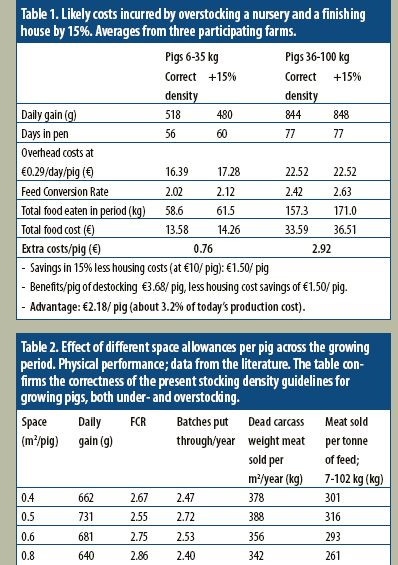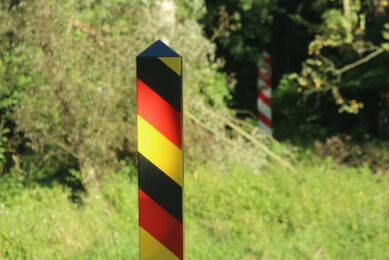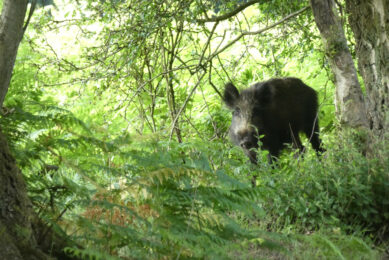What the text books don’t tell you about…The economics of stocking density

The textbooks either touch on, or cover comprehensively, the subject of stocking density of pigs. What none of them that I’ve consulted have yet discussed is the cost of not following the good advice they give.
Yes – plenty of evidence exists on the reduction in physical performance when the spatial needs of pigs are compromised. Work by Edwards, Armsby and Spechter; Powell and Brown and other scientists have illustrated this very well.So how much does it cost the pig producer when he gets his stocking density wrong? More than 20 years ago I was sufficiently concerned when called out to farms as a management adviser that as many as four out of five of the units visited were overcrowding their pigs. Up to 20% in some cases.
As I had been called in because the performance was not up to standard, some brave pioneering souls bit the bullet of advice I had to give them and destocked down to the current guidelines. On the next visit things had usually improved – occasionally dramatically.
But many took little notice. It soon became obvious from follow-up visits or phone calls that as many as 75% were not following the evidence that the scientists were providing us all on the physical performance attributes mainly affecting FCR and daily gain. The primary reasons seemed to be:
1. The rapidly increasing awareness of how much decent housing was costing* which tempted producers to cram in as many pigs per m2as possible without affecting visible performance (vices, aggression, dirty pens, etc.)
2. ‘Bulges’ in pig numbers which just had to be accommodated anyway.
3. Poor forward planning which aggravated the above condition.
4. And lastly – and to my mind very importantly – not fully realising what their degree of overstocking was costing them.
Action needed
So I decided to do something about it as I didn’t seem to be getting anywhere. Over the years I persuaded a few of my ‘converts’ to talk to neighbours who had yet to see the light and persuade them, under my guidance, to do a test or two by deliberately thinning down the stocking density of a house or two to the advised research guidelines.
Some very cooperative farmers also agreed to revert to overstocking some pens by 15% to see how much of a difference there might be.
The results of the four years of visiting and recording (it took that long as I had to convince the participants to agree to a trial design whose result, positive or negative, was likely to mean something from a statistical point of view!) are summarised in Table 1, now brought up to reasonably recent costings and prices in Europe.
This shows clearly that destocking by 15% – two pigs less in a pen of 14 – over-rode any increased housing cost by around 2 to 1.
Still not enough
In these farm trials it was the food conversion that suffered and not the daily gain. However the research trials so far published show that there was a significant reduction in daily gain (see Table 2).
But I still felt that more ‘impactful’ economic evidence from Meat sold per Tonne of Feed (MTF) and cost per m2was necessary to help me really push home the message about the financial penalties of overstocking.
Reducing wasteful practices
During the time it took to compile this information – and especially now that many world pig industries again have their backs to the profit wall – pig farmers are urgently looking for ways to save costs.
Reducing needless waste is a major component of this strategy, and as Table 2 shows, overstocking is very wasteful of money spent on improved genetics and housing.











